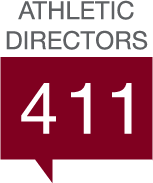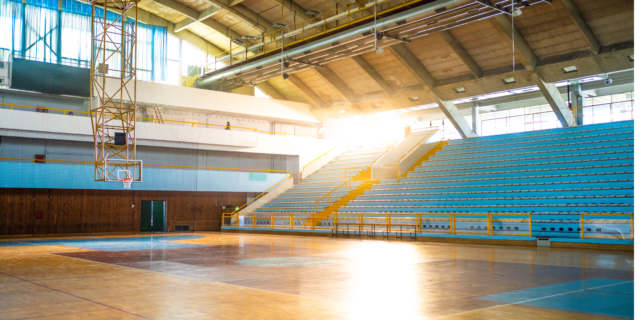Beyond the Game – Why Facilities Matter
Facility management and athletic field upkeep are fundamental to the success and sustainability of sports programs. It goes beyond making the floors shine before game day—it’s about keeping a safe and quality environment year-round for games and practice. A high-quality sports facility enhances athlete performance, safety and community engagement while serving as a hub for school pride and local events. However, some school districts, especially in smaller towns, face tough decisions due to concerns about funding and potential tax increases, delaying necessary improvements. Athletic directors need to advocate for facility management because proactive investment in sports infrastructure benefits not just athletes but the entire community.
Why Athletic Facilities Are a Strategic Asset
Athletic Success and Student Development
- Performance and Safety: Consistent maintenance of fields, courts and equipment provides athletes with safe and reliable surfaces. Poor conditions increase the risk of injuries potentially sidelining athletes and disrupting seasons.
- Attracting Opportunities: Schools with well-maintained facilities can host playoffs and tournaments, offering athletes the chance to compete at home. Hosting events also fosters school spirit, strengthens community support and garners revenue.
Community Engagement and Economic Impact
- More Than Just Sports: Sports fields and gyms often serve as spaces for PE classes, community leagues and public events like graduations or fundraisers. Well-maintained facilities offer multi-use functionality, making them valuable community resources.
- Economic Boost: Schools capable of hosting regional tournaments draw visitors, benefiting local businesses through tourism and creating opportunities for partnerships.
Pride and Property Value:
- School Pride: An impressive sports complex enhances school spirit and pride, which motivates athletes and encourages participation. Conversely, sub-par facilities discourage engagement and may erode confidence.
- Property Value: High-quality facilities make school districts more attractive to families. In fact, real estate agents in Ligonier Valley, PA., claim that families often eliminate the Ligonier Valley as an option and opt for neighboring cities due to the district’s sub-par athletic facilities, impacting enrollment.
The Risks of Neglecting Facility Upkeep
Inability to Host Events
- When facilities fall below standards, the spirit and pride necessary for home games are lost, and teams can even be forced to use community facilities or travel to compete. This can disappoint athletes and disconnects the community from local sports celebrations.
Increased Costs Over Time
- Deferring maintenance only leads to higher repair costs later. Small issues, such as cracked track surfaces or faulty field damage can escalate, requiring expensive repairs or even complete renovations.
Legal and Safety Liabilities
- Unsafe facilities expose schools to legal liabilities if injuries occur due to poor maintenance. Courts and fields with uneven surfaces or faulty equipment are risks that could lead to litigation or insurance claims.
Proactive Facility Management: Best Practices for Athletic Directors
Create a Maintenance Plan and Checklist
- Develop a preventative maintenance schedule for both indoor and outdoor facilities. Regular tasks such as dust mopping gym floors or repairing divots on playing fields ensure optimal conditions.
- Document completed maintenance and repairs, as records can protect against legal issues and ensure accountability.
Collaborate with Community Stakeholders
- Work with school boards, donors and local businesses to secure funding. Present the upgrades as investments rather than costs, showing the long-term value for students and the community.
- Involve local organizations and leagues to use the facilities, creating partnerships that can help offset upkeep costs.
Engage Maintenance Experts
- Hire or consult with sports facility management professionals for critical tasks like annual floor relocating or field drainage checks. These experts can detect small issues before they become major problems.
Maximize Facility Use and Revenue Opportunities
- Schools can rent out their sports complexes for events or offer facilities for community programs. This generates income, which can help sustain upkeep costs without relying entirely on district budgets.
The Long-Term Payoff: Investment Yields Success
Athlete Well-Being and Program Success
- Training and competing on high-quality surfaces reduce the risk of injuries and enables athletes to perform at their best. Well-maintained facilities also attract top coaching talent and enhance the program’s reputation.
Fostering School and Community Pride
- A well-maintained athletic complex creates a sense of belonging and pride, encouraging student and community participation. Hosting major events fosters community bonds and generates enthusiasm for future upgrades.
Future-Proofing Athletic Programs
- Proactive investments in infrastructure ensure the longevity of sports programs. As new sports and recreational activities emerge, having versatile, well-maintained facilities makes it easier to adapt and remain competitive.
Athletic directors play a crucial role in advocating for facility upgrades and proper maintenance. With support from school boards, community members and local businesses, even resource-limited districts can develop sustainable plans to maintain and improve sports complexes. The investment in facilities is an investment in the entire community—promoting athlete safety, fostering school spirit and creating economic opportunities. By proactively managing sports facilities, athletic directors can ensure both current and future athletes have the resources they need to succeed on and off the field.




